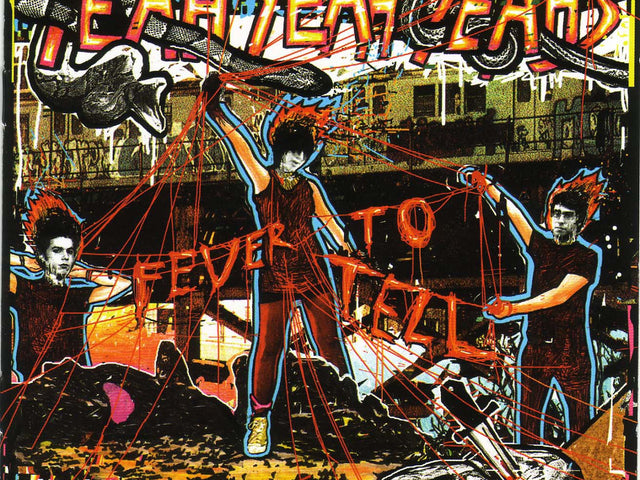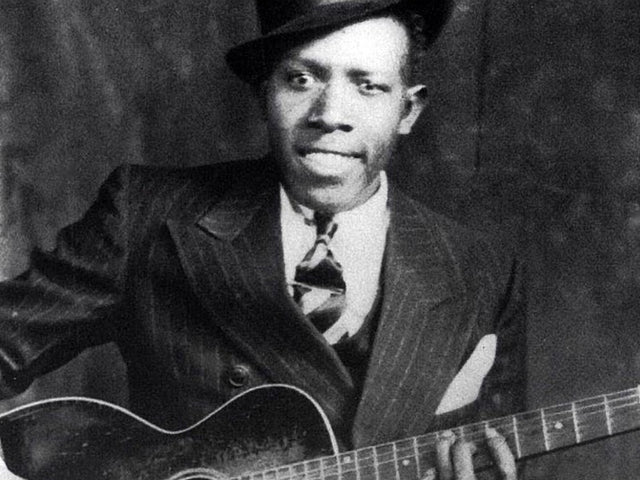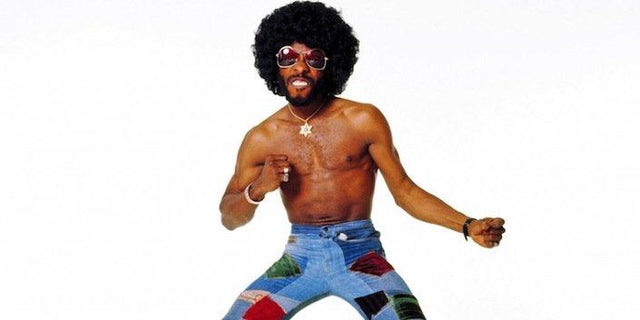Słynny DJ z Las Vegas Pozwólmy Zobaczyć Jego Kolekcję Płyt
Przeglądamy najważniejsze punkty obszernej kolekcji producenta i DJ-a Chrisa Coxa, nominowanego do Grammy.
W retro bungalow położonym zaledwie kilka kroków od Hartland Mansion w centrum Las Vegas, znajduje się ocean winyli. Pudełka ułożone od podłogi do sufitu w skromnej sypialni wylewają się do salonu w różnych etapach organizacji. Dla producenta i DJ-a Chrisa Coxa, nominowanego do Grammy i zwycięzcy listy Billboard, to kolekcja, która przez dekady była odstawiona do magazynu. Aż do teraz. Szacując, że jego cała kolekcja mieści się gdzieś między 24 a 28 tysiącami płyt, rozpoczął żmudny proces sortowania winyli, które nie były odpowiednio uporządkowane od 1991 roku.
„To jak zdjęcia rodzinne,” mówi Cox. „Mogę otworzyć pudełko i zobaczyć mnóstwo grzbietów płyt i mogę powiedzieć ci miesiąc, rok i co się działo. Jako DJ, kolekcjoner, jako fan, byłem tym dzieciakiem z słuchawkami w przyczepie, w moim pokoju, słuchając czegoś w kółko i tylko patrząc na okładkę i czytając teksty. A potem, gdy DJ-owałem sześć nocy w tygodniu, a coś było wielkim hitem, po prostu żyłeś i oddychałeś tymi płytami. Wiesz, jak wyglądały [muzyczne] nuty, patrząc tylko na winyl.”
Aby podzielić się swoją kolekcją z tłumem, rozpoczął internetowy serial zatytułowany Chris Cox Record Box, który już nakręcił 10 odcinków i jest w postprodukcji. „Każdy odcinek to ja przeglądający tajemnicze pudełko — ponieważ nie mam pojęcia, co jest w pudełku. To trochę jak Geraldo.” Ale w przeciwieństwie do skarbców Ala Capone’a, zasoby winyli Coxa zawierają liczne skarby. W międzyczasie sesji studijnych, opowiedział nam o niektórych godnych uwagi tytułach, które ostatnio odkurzył.
1. Aktualnie na gramofonie Coxa:
„Ścieżka dźwiękowa do Sharky’s Machine Burta Reynoldsa,” mówi, pokazując okładkę albumu z charakterystycznym wąsem Reynoldsa. „Na niej znajduje się wersja ‘Street Life’, której aranżacją zajął się Doc Severinsen i jest po prostu niesamowita.” Severinsen był dobrze znany jako lider zespołu i trębacz w The Tonight Show Starring Johnny Carson. Ponadto, ścieżka dźwiękowa zawiera The Manhattan Transfer, Sarah Vaughan i Peggy Lee. „Zasadniczo wzięli mnóstwo utworów, ale zamiast licencjonować piosenki, po prostu nagrali nowe wersje na tę ścieżkę i to wszystko brzmi jak jazz z późnych lat 70. i wczesnych lat 80. — to niesamowita ścieżka dźwiękowa — a do cholery, to Burt w swojej prime.”
2. Najlepszy album do regeneracji po 2016 roku:
„That’s the Way of the World Earth, Wind and Fire. To właśnie grałbym, aby poprawić sobie nastrój,” mówi Cox. „To niekoniecznie symbolika nazwy, ale przepraszam, niezależnie od tego, w jakim nastroju jesteś, jak bardzo jesteś zły, Earth, Wind and Fire po prostu sprawia, że wszystko staje się lepsze i uspokoi mnie, sprawi, że poczuję się trochę cieplej, a wiesz co? To właśnie jest sposób na życie. Jestem ekstremalnie rozczarowany, jestem niezwykle przygnębiony, ale z dziwnym brakiem zdziwienia. Więc to jak, to jest sposób na życie, życie toczy się dalej, będziemy nadal walczyć i toczyć dobry bój.”
3. Najważniejsza płyta do uratowania w przypadku pożaru:
„Diament nadziei z kolekcji, Serce Oceanu mojej kolekcji, najbardziej niezastąpiona rzecz to mam oryginalną kopię The Black Album Prince'a, zanim została wycofana.” Ulubionym artystą Coxa jest Prince, a The Black Album to jego święty Graal.
Cox wyjaśnia, że przed planowanym wydaniem płyty w grudniu 1987 roku, została ona wycofana, ponieważ Prince uznał, że praca związana z jego alter ego Camille była zbyt sugestywna. Jednak „dealer narkotykowy płyt” Coxa był w stanie znaleźć kopię z pojedynczego pudełka, które nie zostało zniszczone. „Wtedy kosztowała 400 dolarów w 1988 roku. Ostatnio sprawdziłem, żeby zobaczyć, ile to warte, i jest zdecydowanie warte kilka tysięcy dolarów,” mówi. Album został ostatecznie wydany w 1994 roku, aby wypełnić kontrakt Prince'a, aby mógł zakończyć umowę z Warnerem, ale Cox trzyma tę rzadką oryginalną wersję pod kluczem.
4. Album, na którym utknąłbyś na bezludnej wyspie:
„Moon Safari zespołu Air, pierwszy album Air,” mówi Cox. „Kiedy ten album wyszedł, strzelił mi w głowę, otworzył mi umysł, słuchałem go codziennie przez dwa i pół roku bez przerwy.” Tak mu się podobał, że rozdał około 30 kopii każdemu, kto chciał słuchać. „Ten album to dla mnie czysta magia. W rzeczywistości, połowa sprzętu, jaki mam w swoim studio, wynika z tego, że czytałem napisy końcowe i patrzyłem na listę sprzętu przy każdej piosence i myślałem: ‘O Boże, to urządzenie jest na tych trzech utworach, które lubię, więc muszę to kupić.’ Więc rzuciło mnie to w poszukiwania vintage’owych syntezatorów, które były bardzo kosztowne.”
5. Ulubiona 12” z jego kariery DJ-skiej:
„Moja ulubiona 12” wszech czasów to Pump Up the Volume M|A|R|R|S.” Cox ciągle natrafiał na ten tytuł, czytając kartę z informacjami od Rockpool, a utwór zdobywał szczyty list przebojów w Europie, ale nie miał jak go odsłuchać w Stanach w 1987 roku bez fizycznej kopii. Przypadkowa rozmowa z rodzicami na temat jego poszukiwań winylu zmieniła to. „Pewnego dnia byli w centrum handlowym w Reno i była tam mała wytwórnia płyt, a mój tata wszedł i zapytał gościa o tę płytę. Powiedział: ‘O, możemy to dla ciebie zamówić.’ W ogóle się tego nie spodziewałem, ale to jedna z tych rzeczy, gdy rodzic mówi ci coś, a zwłaszcza gdy już DJ-ujesz, a rodzic mówi: ‘O, pozwól, że pójdę do centrum handlowego i poszukam tego dla ciebie.’ To absurdalne, prawda?”
Cox był wzruszony, że rodzice dostali mu tę płytę w ręce, a gdy puścił igłę, jego umysł eksplodował. „Sampling był jeszcze w powijakach, wiedziałem, co to jest, i sampling był obecny, ale to była mega-mikstura sampli.” To wysłało go na polowanie na źródła materiału wykorzystanego w utworze. „Zajęło mi to około dwóch lat, aby znaleźć każdą pojedynczą płytę, która była na nim sampled. Więc tę 12”, chcę, żeby ta płyta była grana na moim pogrzebie. To będzie najtańszy pogrzeb w okolicy!”
6. Album kupiony tylko ze względu na okładkę:
„BBP Speed Dictation Program. ‘Dla pracującej dziewczyny, która chce poprawić swoją karierę, dla kobiety pragnącej wrócić do pracy,’” czyta z okładki. „To zasadniczo instruktażowa płyta o tym, jak robić dyktowanie. Uwielbiam takie rzeczy. Jak przemysłowe płyty i dziwne korporacyjne płyty.” Cox wymienia też inny ulubiony tytuł — instruktażową płytę do nauki papugi, jak mówi. „Myśleć, że zatrudnili studio, może przynajmniej więcej niż jednego inżyniera, trzeba było więc wydrukować okładkę, zrealizować film, zrobić etui, wydatki związane z tworzeniem płyt są szalone, by pomyśleć, że ktoś to zrobił dla czegoś tak specyficznego. Ile osób potrzebuje płyty o tym, jak nauczyć papugę mówić? Ale to istnieje i jest niesamowite.”
7. Album, którego Cox ma w nadmiarze w swojej kolekcji:
„Wydania Hot Tracks,” mówi. „Hot Tracks to usługa remiksów DJ-ów i to tam zaczęła się cała moja kariera.” Każde wydanie, w którym Cox był producentem, dostawał 10 kopii. „Było to również bardzo kolekcjonerskie w tamtym czasie, więc dawałem kilka znajomym, a potem po prostu trzymałem wszystkie swoje kopie na zawsze, myśląc, że winyl pójdzie w górę, co nie miało miejsca przez długi czas, ale teraz tak.” zaledwie 1000 kopii każdego wydania, ma monopol na kolekcję Hot Tracks. „Więc zapraszam do Emporium Winyli Chris’a, przyjdź i zdobądź dla siebie muzykę taneczną,” żartuje. „Będziesz tańczyć całą noc!”
8. Płyta, która była grana tak wiele razy, że się zniszczyła i musiał kupić ją ponownie:
„Nie dlatego, że grałem ją tak często, ale dlatego, że tak bardzo lubiłem ją scratchować,” mówi Cox. „Jedna to Hashim Al Naafiysh (The Soul) — została zsamplowana do śmierci, ale była najfajniejszą płytą do scratchu i zawsze widziałbyś ludzi w bitwach z nią. Jeśli twoje wkładki nie były prawidłowo wyregulowane, spaliłbyś tę płytę. Blisko drugie miejsce to 12” Public Enemy Bring the Noise. „Dlaczego to było znaczące? Ponieważ utwór 1 z pierwszej strony A to pełna piosenka, a utwór 2 to acapella, więc to tam dostajesz wszystkie te ‘Yeeeaaah, boy!’ i ‘Jak nisko możesz zejść?’ Każdy aspekt tego singla został zsamplowany do śmierci, więc zazwyczaj robiłem to na żywo, więc wielokrotnie ją paliłem.”
9. Płyta, która najbardziej otworzyła mu umysł:
„Heavy Metal Be-Bop Brecker Brothers,” mówi Cox. „Brecker Brothers, Michael i Randy Brecker, byli jazzowymi saksofonistami i trębaczami oraz the sekcją instrumentów dętych na sesjach w Nowym Jorku w latach 70. Pojawili się na płytach od Parliamentu po każdego innego,” mówi. „Ten konkretny album to koncert na żywo, który zrobili w Nowym Jorku i ta płyta eksplodowała mi do mózgu. To zasadniczo fuzja twardszych rockowych brzmień z super, super agresywnym be-bop jazzem.” Ciekawe fakty? „Perkusista to Terry Bozzio z zespołu Zappy, a klawisze to Paul Shaffer przed Lettermanem i zanim pracował z SNL,” mówi Cox. „Ten album jest po prostu genialny na wielu poziomach. Gra jest niezrównana i po prostu nie do pobicia.”
10. Najlepszy album do świętowania legalizacji marihuany w kilku stanach:
„Circles Around the Sun, Interludes for the Dead,” mówi. „Kiedy poszedłem na koncert Grateful Dead ‘Fare Thee Well’ to był ich wielki finał, pierwsi członkowie Dead w Chicago w zeszłym roku. Byli Phil Lesh, Trey Anastasio oraz Bruce Hornsby i było 72 000 ludzi na Soldier Field, gdzie zagrali trzy koncerty na 50-lecie zespołu.” Ale to muzyka grana podczas przerwy wysłała Coxa na polowanie na „Easter egg”. „Wszystkie utwory, najkrótszy z nich trwa dziewięć minut, ale są też utwory 20-minutowe, które tak naprawdę nie są jamami, ale są to groove’y, które ewoluują i wszystko było zagrane na żywo przez prawdziwych muzyków, a gdy dojdzie styczeń, uwierz mi na słowo. Zdobyć kopię Interludes for the Dead autorstwa Circles Around the Sun i będziesz w porządku.”
Deanna Rilling jest freelancerem dziennikarzem z siedzibą w Las Vegas, NV. W muzycznym świecie działa od ponad 20 lat, a w 2007 roku przekształciła swoją miłość do muzyki w karierę. Jako rockowa/klubowa entuzjastka jej kolekcja winyli jest mieszanką utworów od Tom Petty, David Bowie i Prince, po Crystal Method, DJ Shadow i Pretty Lights, z dodatkiem Tori Amos i Aaliyah dla wzbogacenia całości.



